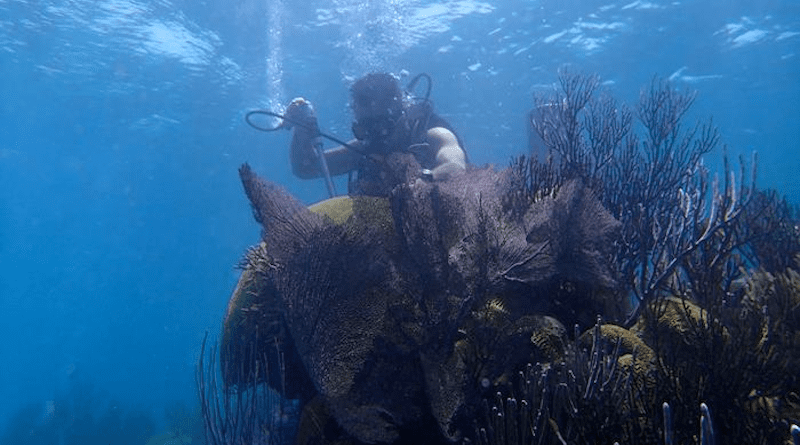Century-Old Coral Reveals Pacific Western Boundary Current Strengthened As Climate Warmed, Impacting El Niño
The Pacific Ocean’s western boundary current, which forms a critical regulator of sea surface temperature and weather patterns, has significantly strengthened as the planet warms, according to a new study published in the journal Nature Geoscience.
The study provides the first evidence that the western boundary current in the South Pacific has significantly strengthened during the 20th century in response to global warming, contributing to an intensified equatorial undercurrent, according to Boston College Assistant Professor of Earth and Environmental Sciences Xingchen (Tony) Wang, a co-author of the report.
Records drawn from coral samples also showed a pronounced recurring pattern of variable ocean-atmosphere climatic conditions – known as decadal oscillation – indicating that periods of enhanced western boundary current correspond to periods of increased sea surface temperatures in the eastern equatorial Pacific, according to report, prepared by Wang, National Taiwan University’s Haojia Ren and her team, and collaborators from Taiwan’s Academia Sinica, University of California, Berkeley, University of Texas at Austin, and Hawai’i Pacific University.
“This result confirms the significant role of the western boundary current in controlling the heat balance of the equatorial ocean, as predicted by climate models,” Wang said.
The team examined the historical clues embedded in century-old coral, probing the chemical components of tropical coral’s skeleton for data on environmental and climatological conditions in the past, much like examining the rings that mark the year-by-year development of trees. The study, titled “Increased tropical South Pacific western boundary current transport over the past century,” explored how global warming has led to the strengthening of the western boundary current in the South Pacific, which has had a significant effect on the broader global climate.
Wang said that the team set out to better understand how the western boundary current has changed as the climate has warmed. The ocean acts as the largest heat reservoir in the Earth’s climate system, Wang said.
“More than 90 percent of the global warming heat has been absorbed by the ocean,” Wang said. “The circulation of the ocean plays a key role in redistributing the ocean’s energy and in doing so, regulates global and regional climate. This means that the strengthening of the western boundary current has an effect on weather events that take place hundreds if not thousands of miles away.”
He added, “The tropical Western Pacific Ocean is the largest warm pool in the world. It is particularly important for a climate phenomena known as El Niño.”
The El Niño, as NOAA has officially declared its arrival in June, has been closely associated with increased flooding and rain across the Americas and the Pacific.
The western boundary current system in the tropical Pacific Ocean transports water into the equatorial region and regulates its sea surface temperature, influencing El Niño and La Niña activities. However, due to the limited availability of long-term observational data from satellites and instruments, it has been unclear whether the western boundary current is strengthening or weakening in the context of global warming, Wang said.
The researchers collected a century-long coral sample from the Solomon Sea and used a mass spectrometer to analyze the isotopic composition of nitrogen – namely the ratio of nitrogen-15 and nitrogen-14 – preserved in the coral sample, which served as a proxy for western boundary current changes, according to the report.
The coral records also showed a pronounced decadal oscillation, indicating that periods of enhanced western boundary current correspond to periods of increased sea surface temperatures in the eastern equatorial Pacific.
Wang said the findings indicate that the continued strengthening of the western boundary current will keep playing a significant role in the global climate and the extreme weather events that have become increasingly common in the 21st century.
“We were a bit surprised that the western boundary current has indeed strengthened under global warming,” said Wang. “It implies that the western boundary current will continue to play an important role in regulating tropical and global climate in the future. For example, enhanced western boundary current might make it easier to develop strong El Niño events, such as the one we are currently experiencing.”
Wang said the next steps in this research will continue to use coral samples to study ocean circulation changes and how those changes interact with the climate system, both today and in the past.

